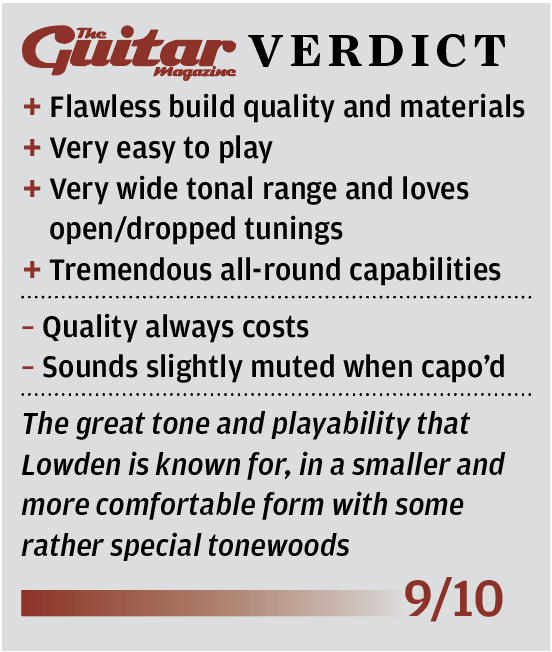Related Tags
Lowden S50 Sinker Redwood Review
To celebrate three decades in business, Coda Music commissioned a limited run of 30 Lowden acoustics. Huw Price tests one of the Downpatrick company’s finest…
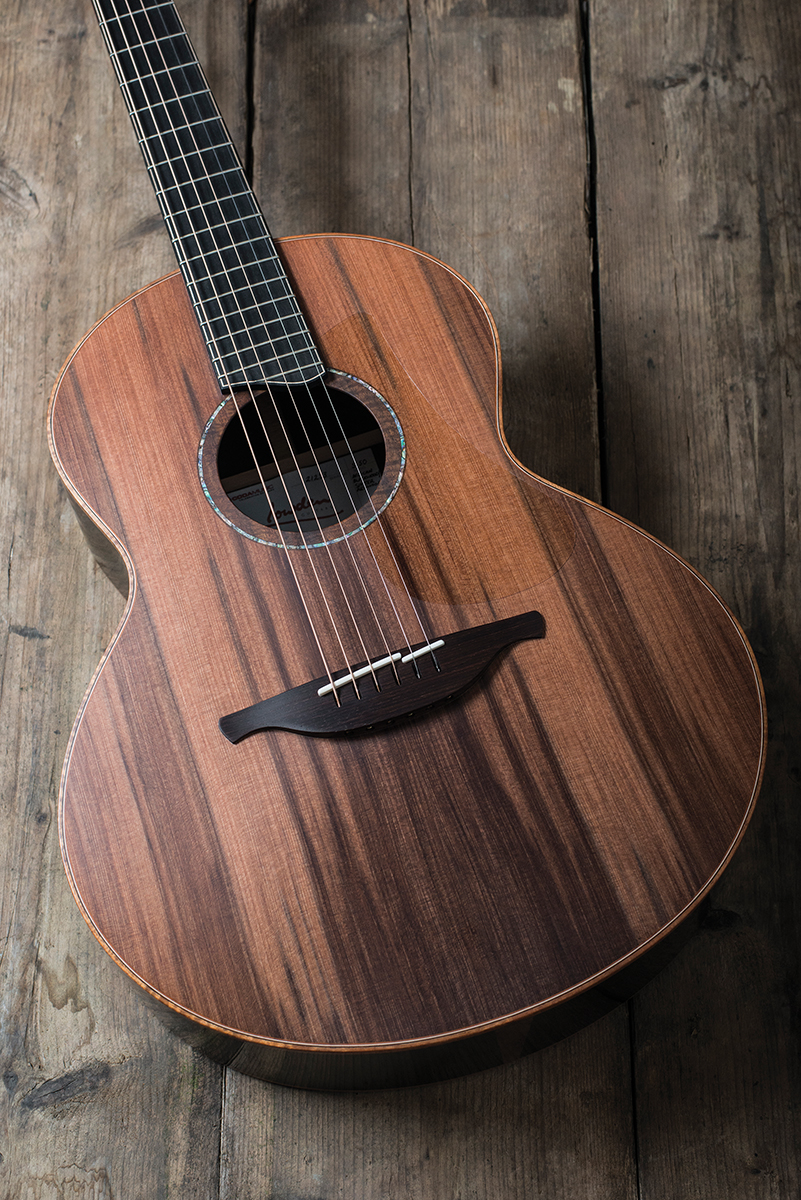
There is something undeniably organic about Lowden guitars. The emphasis is almost entirely on wood and the only components not of plant-based origin are the frets and the tuners. One suspects that if George Lowden ever figures out how to make a friction peg with a 20:1 gear ratio, gold Gotoh 510 machineheads will be a thing of the past. For now, he’ll have to content himself with ebony buttons.
All joking aside, on opening the case it’s immediately apparent that this S50 is an absolute tour de force of precision woodworking. Everywhere you look, there is evidence of extreme attention to detail. Check out the mitre joints in the rosewood, mahogany and maple purflings on the back, and the almost undetectable but dead centre joins in the Tasmanian blackwood bindings.

The headstock contours date back to the earliest Lowdens and it’s an interesting design – especially when viewed from the back. The top of the peghead is rolled over and the shape is enhanced by an ebony back veneer to match the front. At the opposite end, the veneer curves outwards to conform to the carved volute.
The mahogany and rosewood neck is a five-piece construction and we particularly like the way that the two rosewood layers disappear under the rear headstock veneer to re-emerge at the top. The rosewood layers also accentuate the heel shape – another beautiful Lowden feature.
A tapered inlay at the tail block has pointed ends that cross the binding line. The wood is unspecified, but it looks like highly figured walnut and the workmanship is absolutely immaculate. The same can be said of the abalone soundhole ring and by keeping the decoration to a minimum, nothing upstages the sinker redwood top.
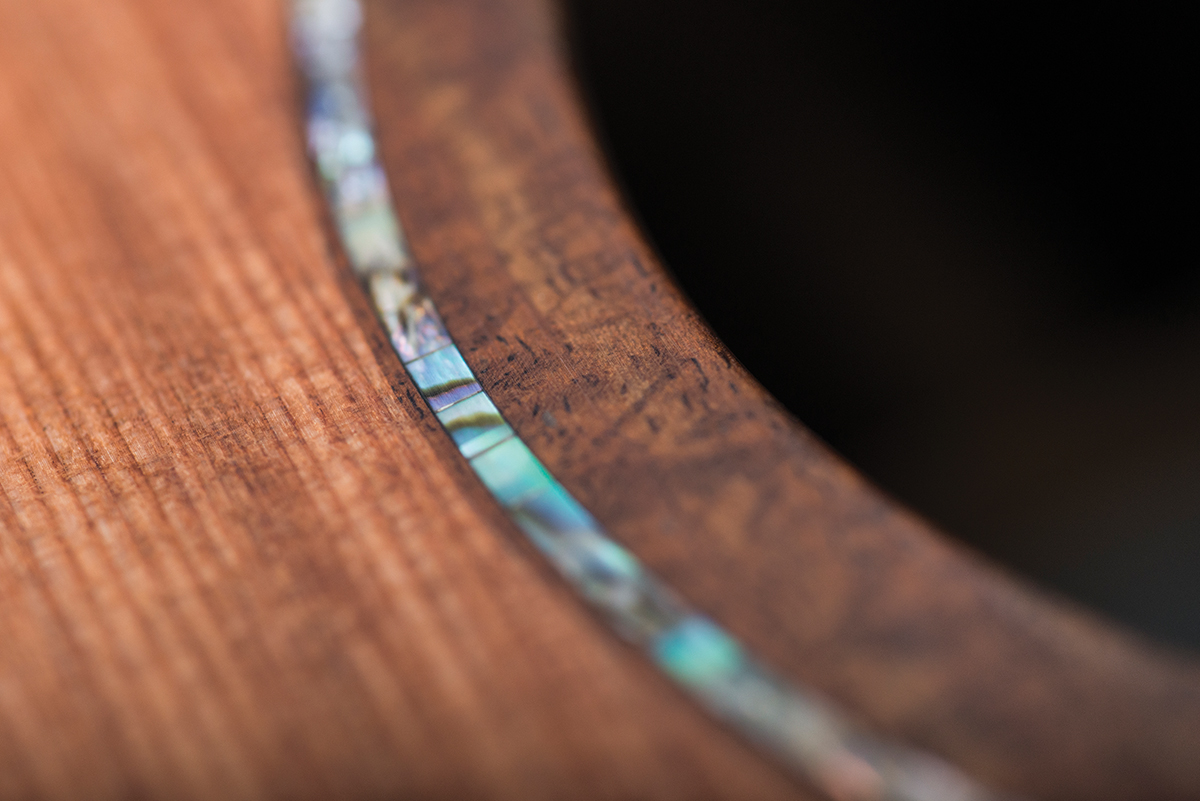
Both visually and sonically, the top is this S50’s main event, but what exactly is sinker redwood? Well if you subscribe to the idea that ‘old growth’ wood offers superior tone, this timber is about as old as it gets. During the latter half of the nineteenth century, redwood was in great demand and Californian lumberjacks would float logs down the river to the sawmills.
During summers, when the rivers were low, logs were dragged into the centre of the river and piled up to create dams. Once the rains came, the dams were dynamited and the logs would rush downstream on the swollen rivers – all except those that had been at the very bottom of the dam, and were literally stuck in the mud.
Eventually these left behind logs sank deeper and were covered over, sealed and preserved by river silt. They lay largely forgotten until 1995 when a man named Arky Ciancutti heard about the logs and set about salvaging them.

Due to a century in the silt, sinker redwood has a deep reddish brown colour that could be mistaken for streaky mahogany. More importantly from a guitar building perspective, the redwood becomes harder and stronger. We’re told it retains the cedar-like tonality of regular redwood, but acquires more spruce-like brightness and harmonic complexity.
For this guitar, it combines with master-grade African blackwood back and sides, which is a personal favourite of George Lowden. As always, Lowden’s pinless rosewood bridge with a two-piece bone saddle simplifies string changing. The S50 comes in a form-fitted hard case and also features a signed interior label.
In Use
Most Lowdens have marker-free ebony fingerboards and this example, with its elegantly asymmetrical end, is no different. But fear not, because the pearl side dots are large and really pop thanks to the black outer edge of the maple/ebony binding. For testing, the S50 is equipped with 0.012 Elixir Nanoweb phosphor bronze strings.
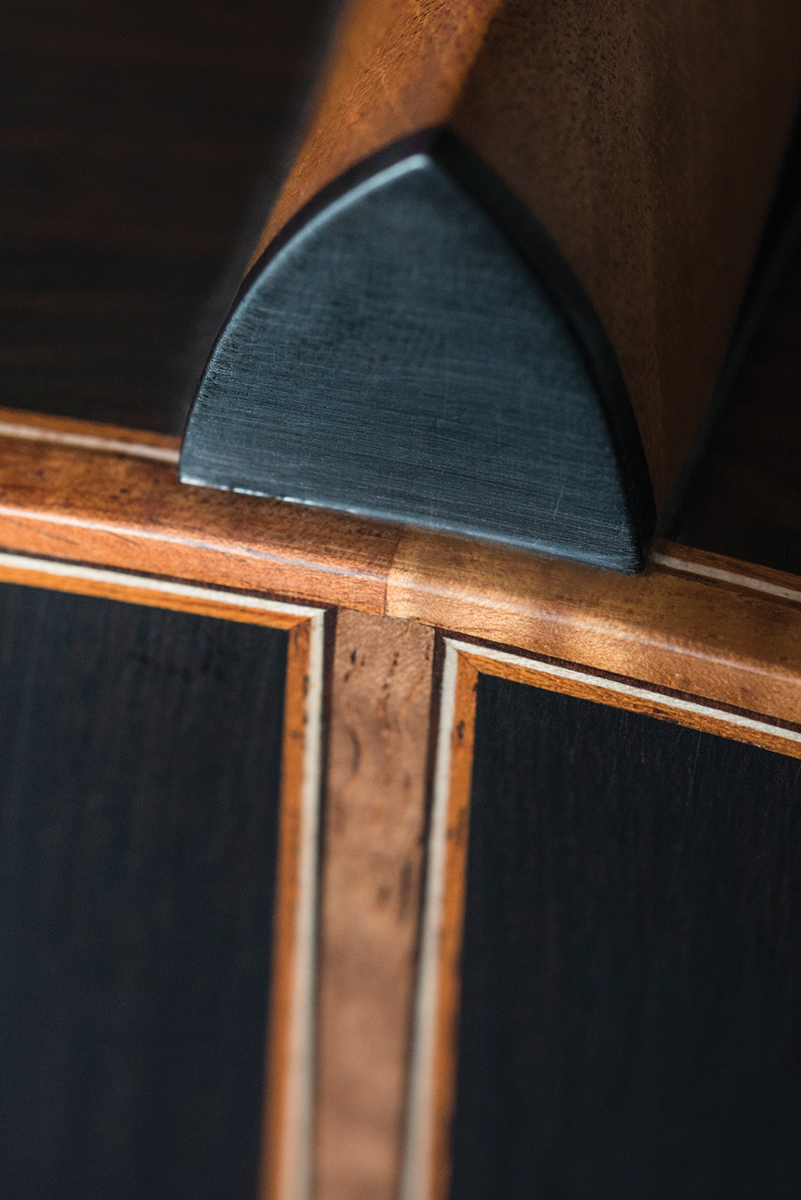
Resisting for a moment the urge to dive into DADGAD, a strummed E chord causes the S50 to blast out a waft of heavily scented air along with a sound that is simultaneously deep, strong in the mids and glistening in the treble. Both volume and tone belie the body size because bass extension is very impressive and there’s no hint of midrange boxiness.
The string-to-string separation, bass definition and overall balance are unusually precise without being sterile or damped. Quite the contrary, as the lengthy sustain and dense upper harmonics provide dynamic piano and harp-like textures.
The standard of fret dressing and setup is entirely commensurate with the woodwork and as such, is beyond reproach. Despite the lively dynamics and touch sensitivity, the S50 is easy to control and responds to a delicate touch as well as strong strumming and percussive Bert Jansch-style finger pops.
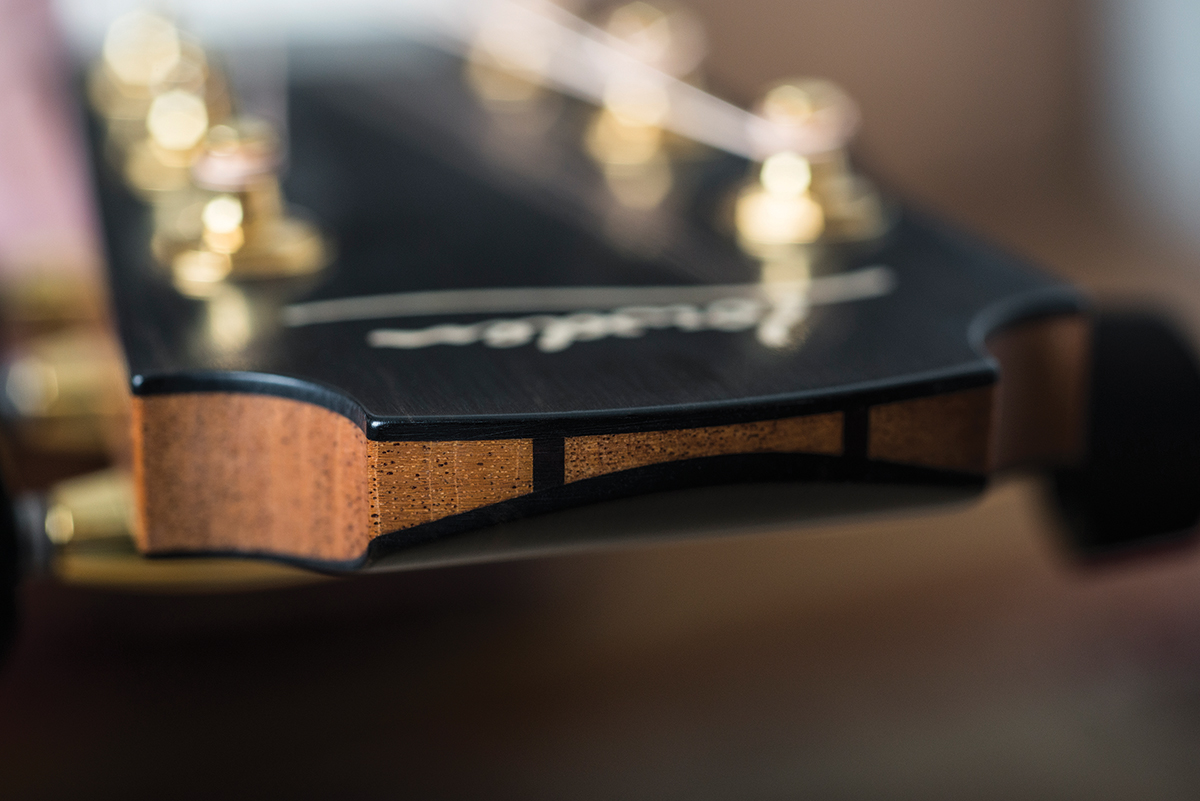
We consider the S50 a genuine all-rounder for strumming and fingerstyle, but we’re most drawn to the latter. Although the S50 tone is well suited to an Americana repertoire, it’s perhaps predictable that it really excels in open tunings with dropped lows combined with fretted notes and open string drones.
At its best, the S50 is vibrant, ringing, woody and ethereal. We also find that these qualities are drawn out in dropped tunings. Conversely, adding a capo anywhere beyond the 3rd fret slightly tames the dynamics and subdues the tonal richness. Perhaps this is where the greater sonic heft of Lowden’s larger bodied models has an advantage.
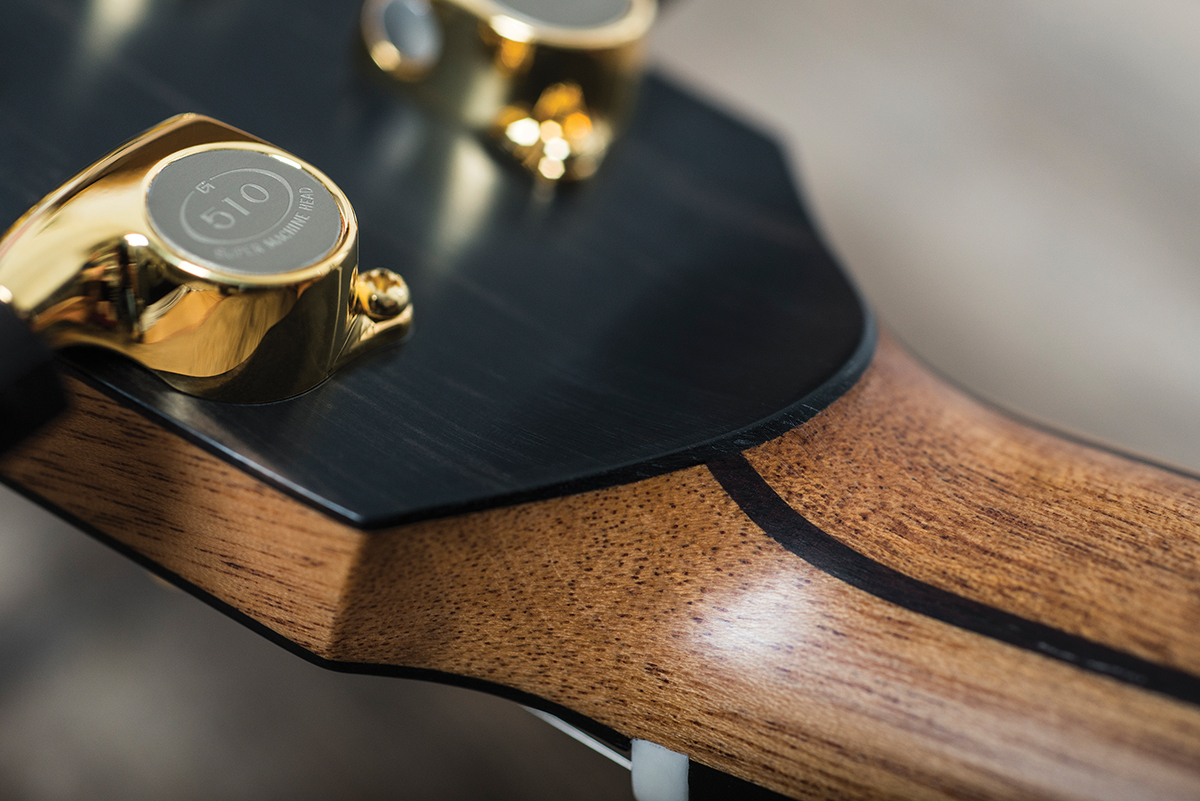
Since Lowden offers a range of models, it may be interesting to consider if there is a ‘Lowden sound’. This reviewer once owned a 1979 Lowden L32 and despite the substantial difference in body size between the L32 and the S50, the review guitar feels and sounds very familiar.
We recall the bigger L32’s greater low-end power, but the S50 is a more refined and sweeter-sounding instrument. The way the tone is bright and airy played low on the fingerboard and then becomes more rounded and supple as you move higher is certainly a shared characteristic. Playing the top strings in the upper registers, both guitars take on a nylon-string smoothness as the upper harmonics soften.
Overall, the S50 is better made, easier to play and has a more involving and inspiring tone. The smaller body also ensures you won’t develop shoulder and neck problems if you’re under six feet tall – which is the only reason that L32 is no longer with us. Quality costs, but the S50 is a fine and special instrument.
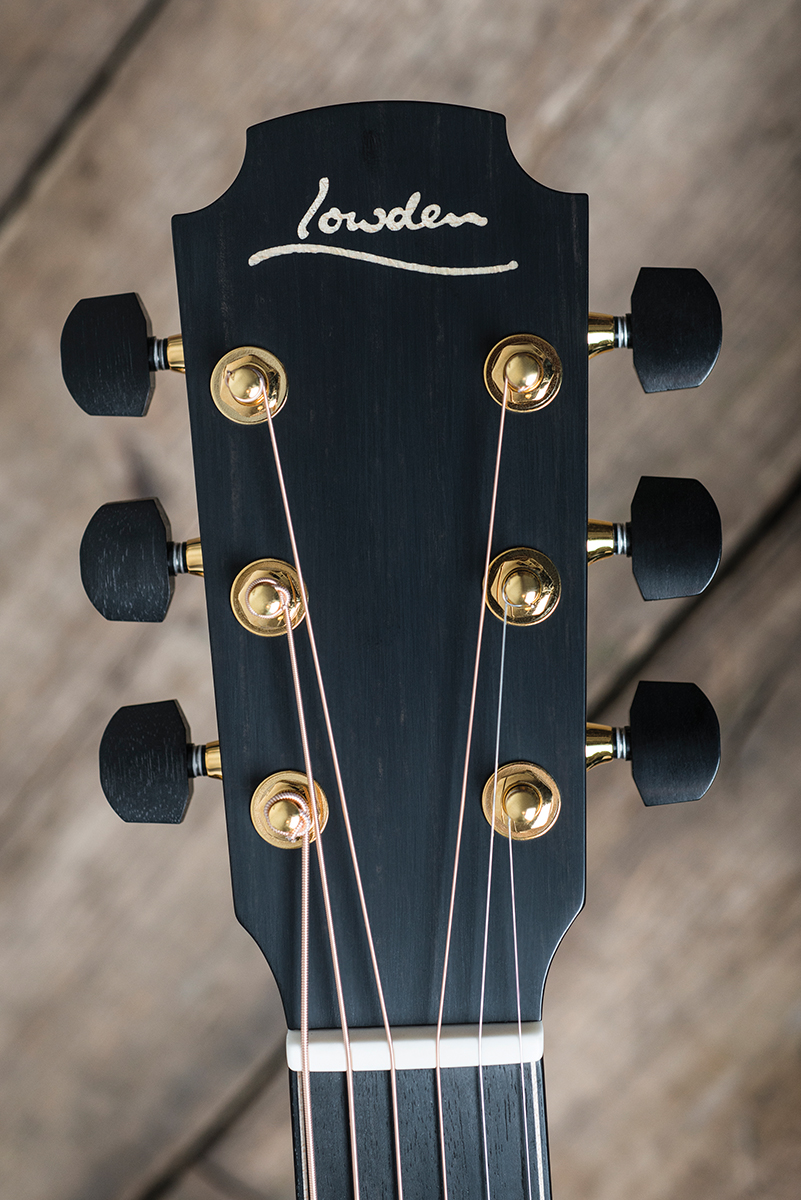
KEY FEATURES
Lowden S50 Sinker Redwood
• PRICE £6,750 (inc hard case)
• DESCRIPTION All-solid, 6-string acoustic guitar. Made in the UK
• BUILD Sinker redwood top with African blackwood back and sides, laminated mahogany/rosewood neck, rosewood bridge, bound ebony fingerboard, ebony peghead overlay front & back, 14th fret neck join, Gotoh 510 tuners with ebony buttons, bone nut and split saddle
• ELECTRICS N/A
• SCALE LENGTH 630mm/24.8”
• NECK WIDTH 45.5mm at nut, 56mm at 12th fret
• NECK DEPTH 19.5mm at first fret, 21.5mm at 9th fret
• STRING SPACING 38mm at nut, 54.5mm at bridge
• WEIGHT 2.06kg/4.54lbs
• FINISH Hand-rubbed satin
• LEFT HANDERS No
• CONTACT Coda Music 01438 350815 www.coda-music.com, www.lowdenguitars.com
